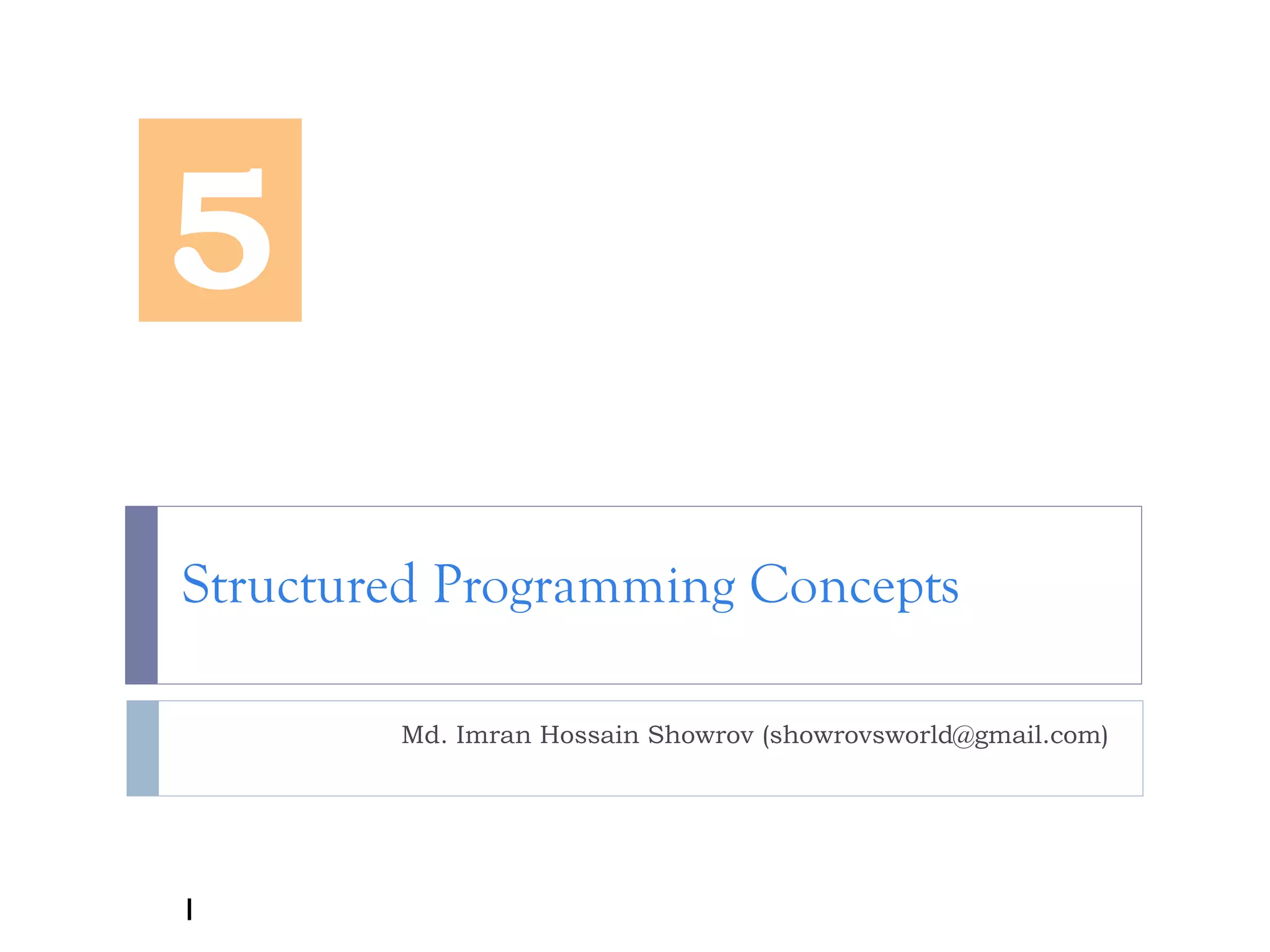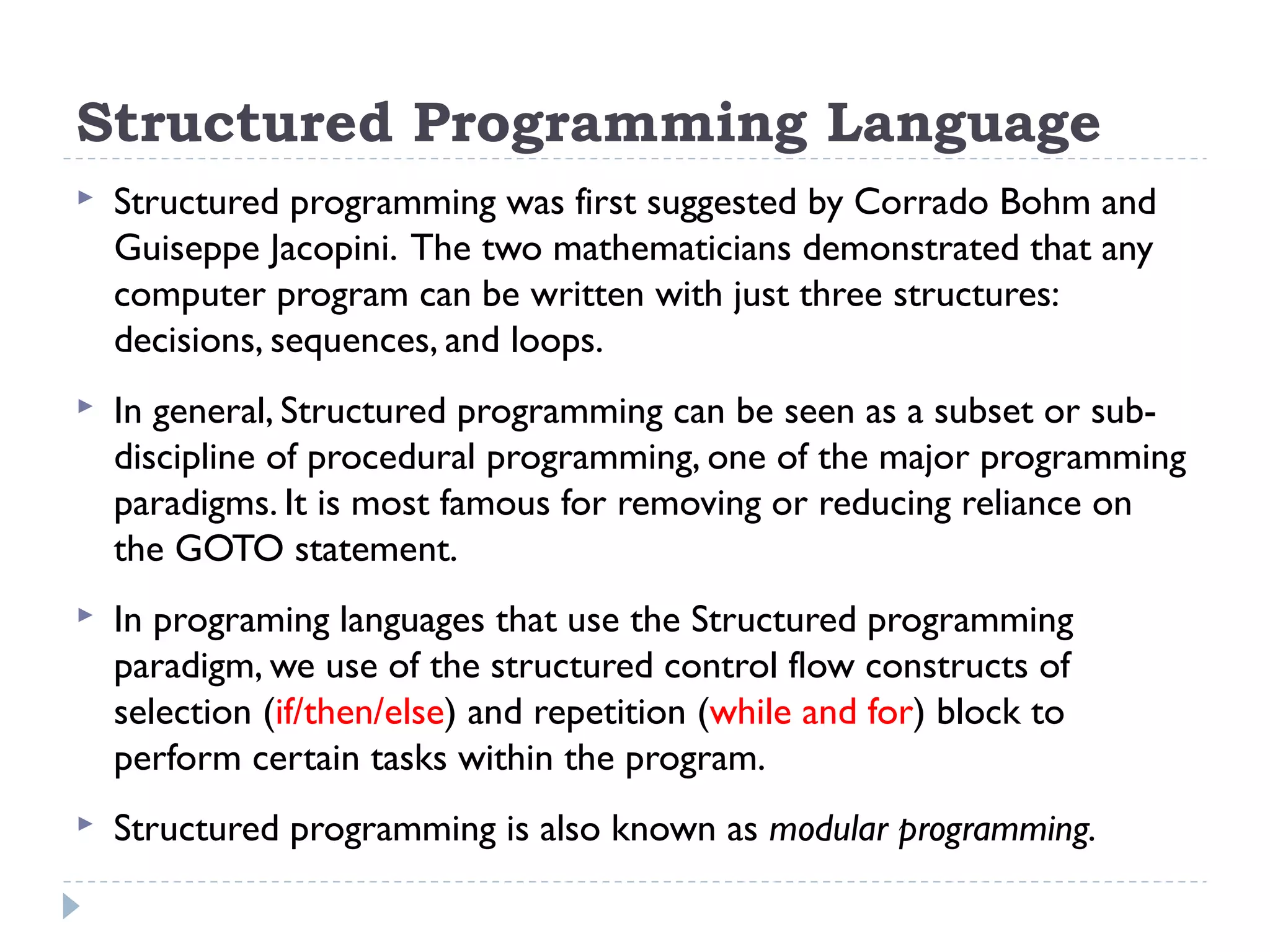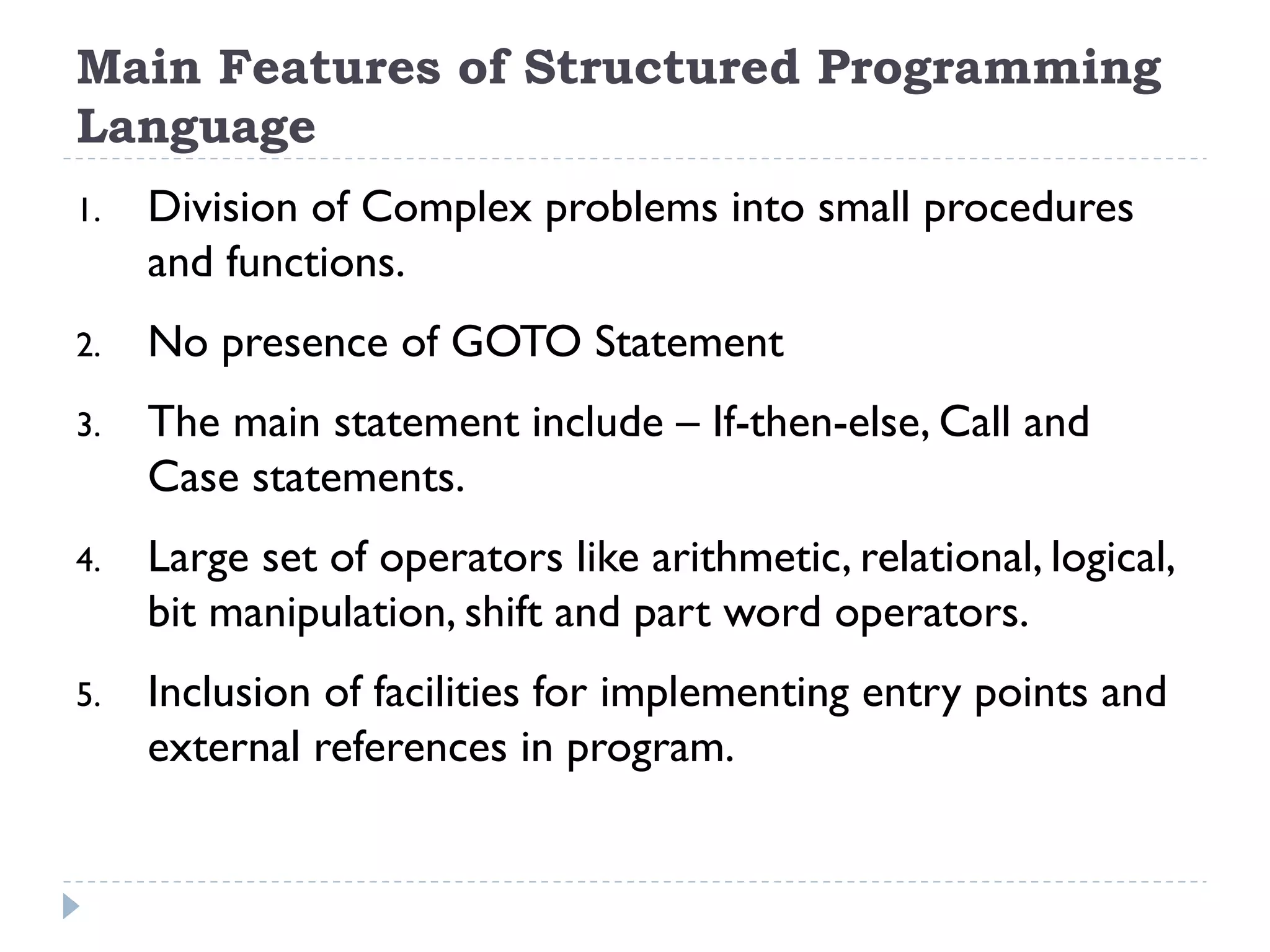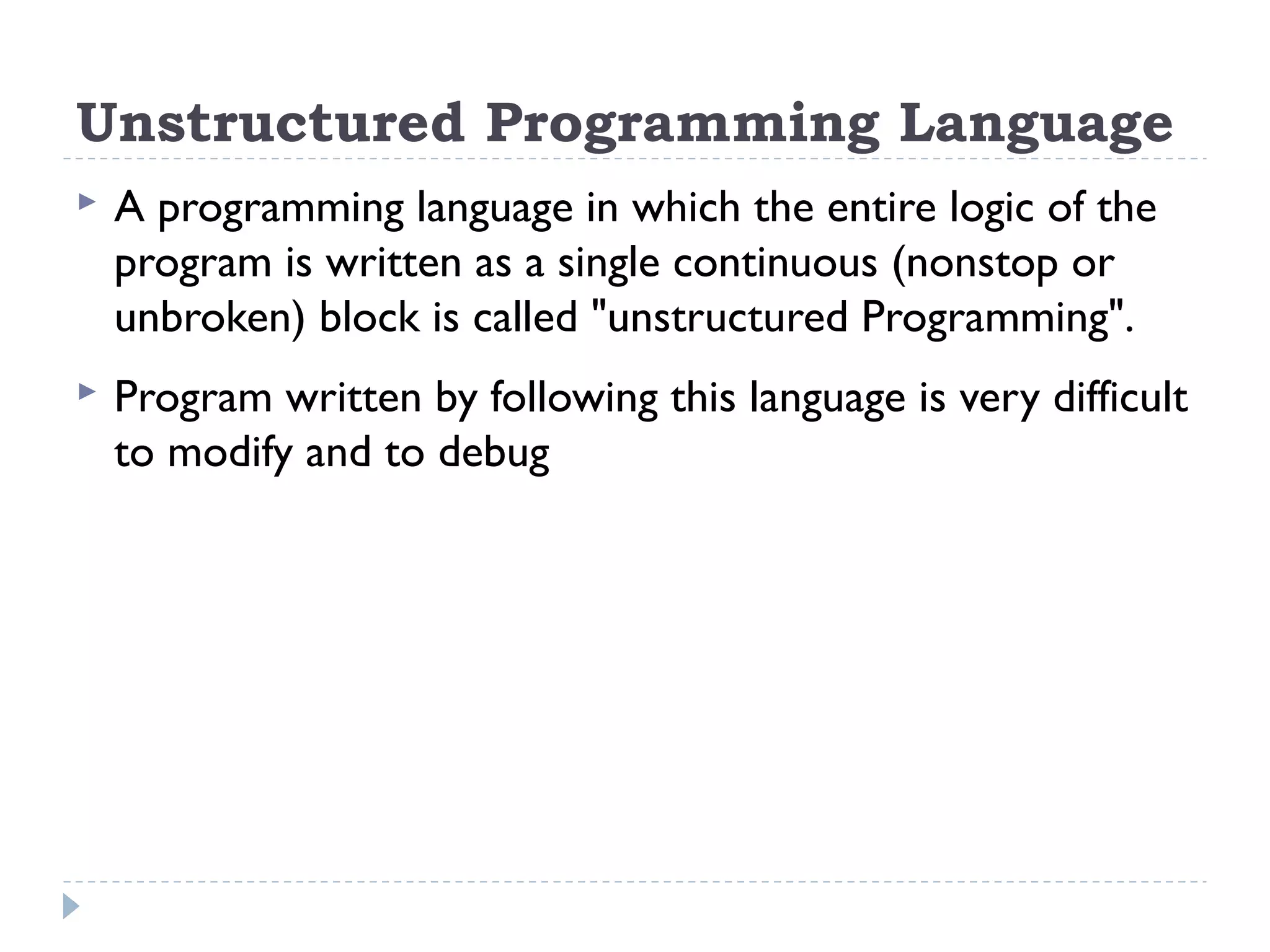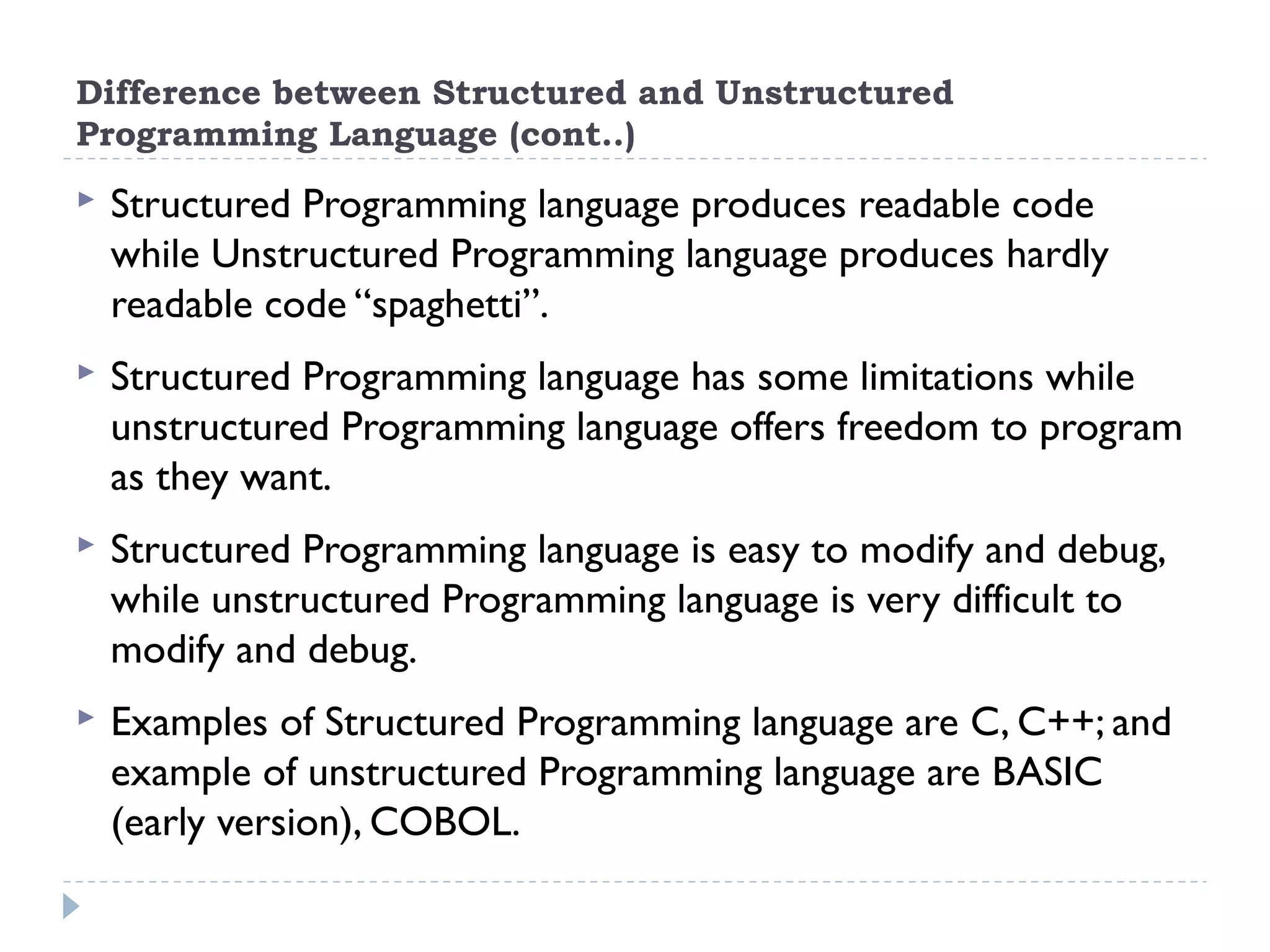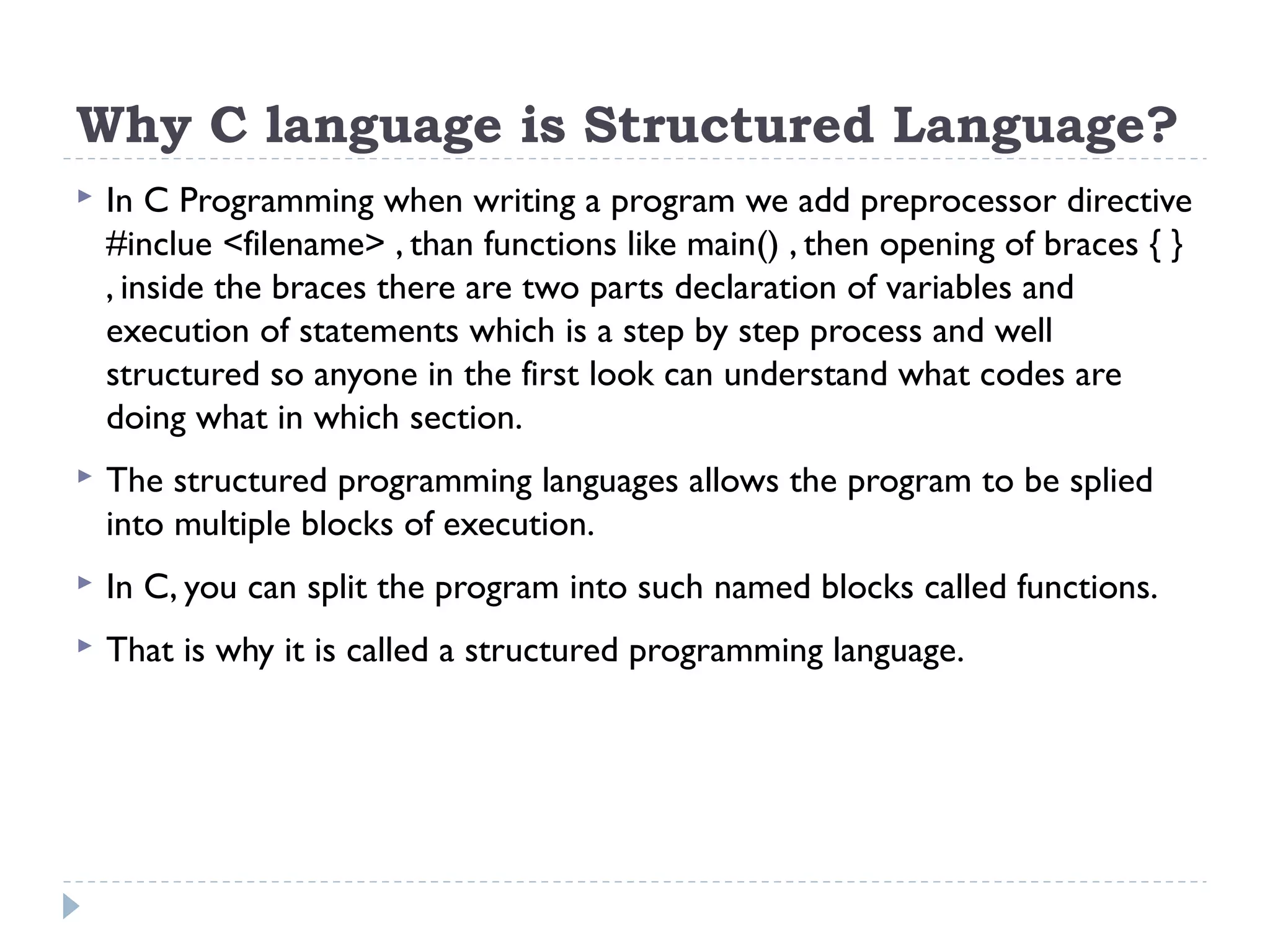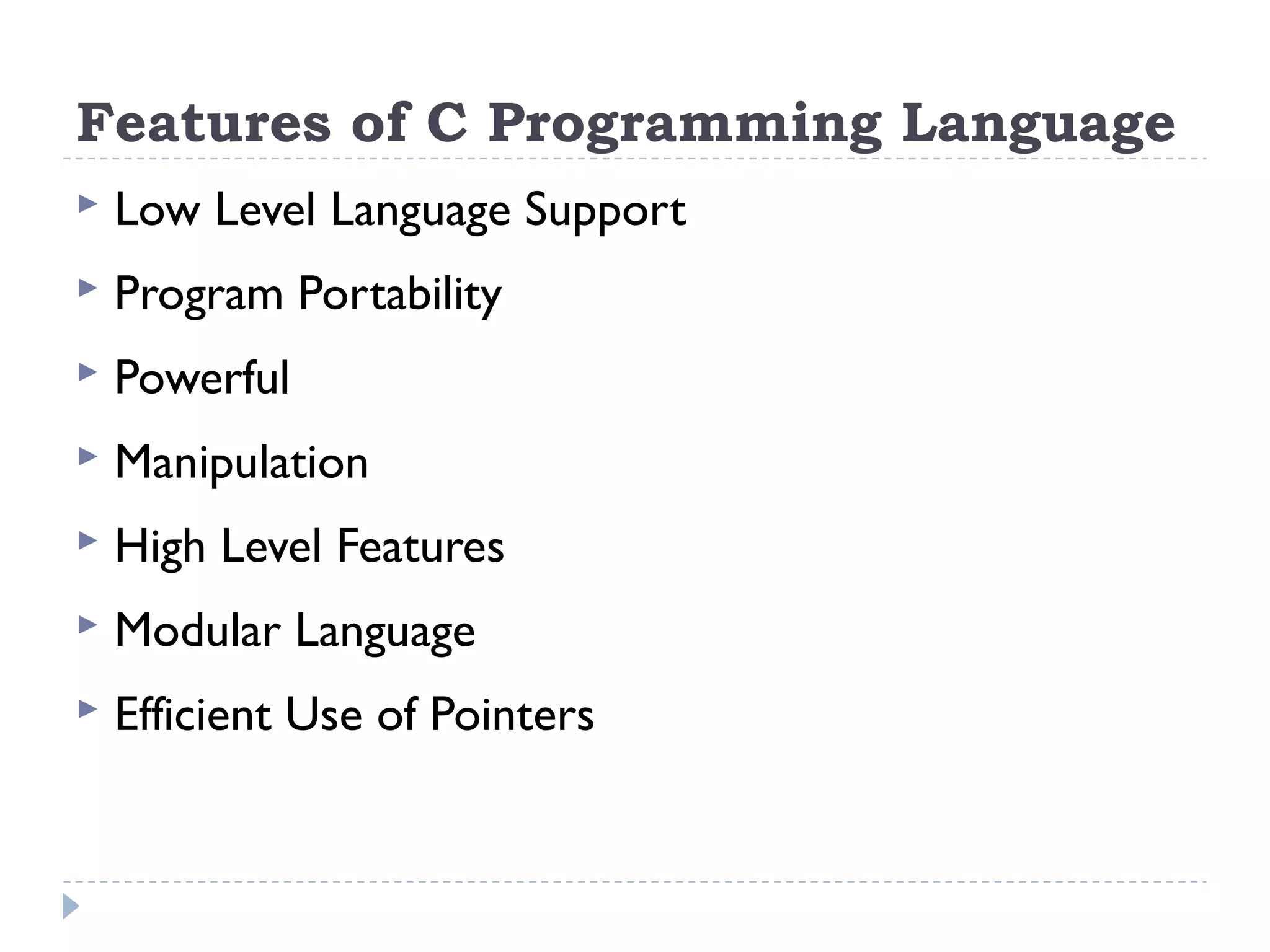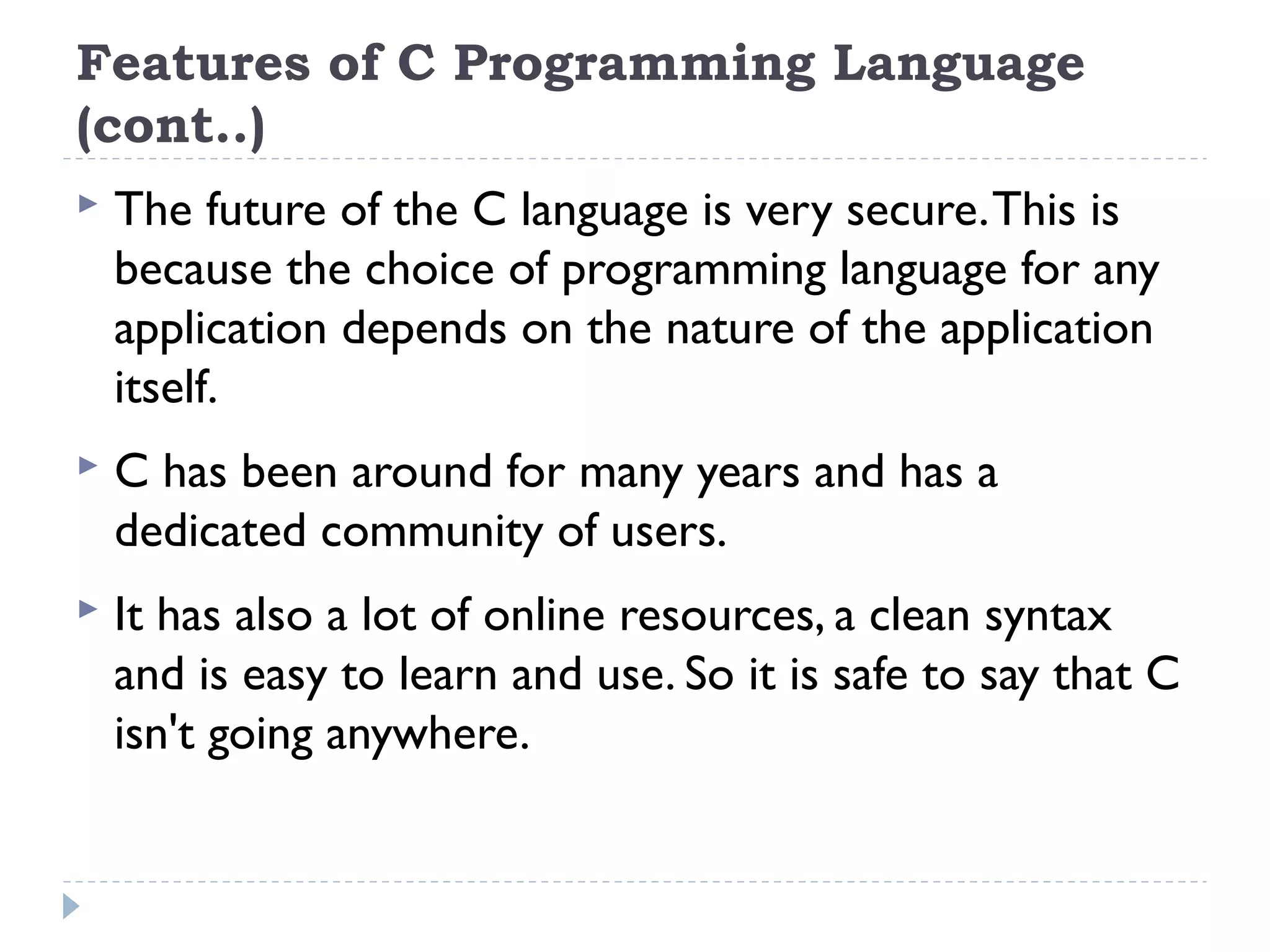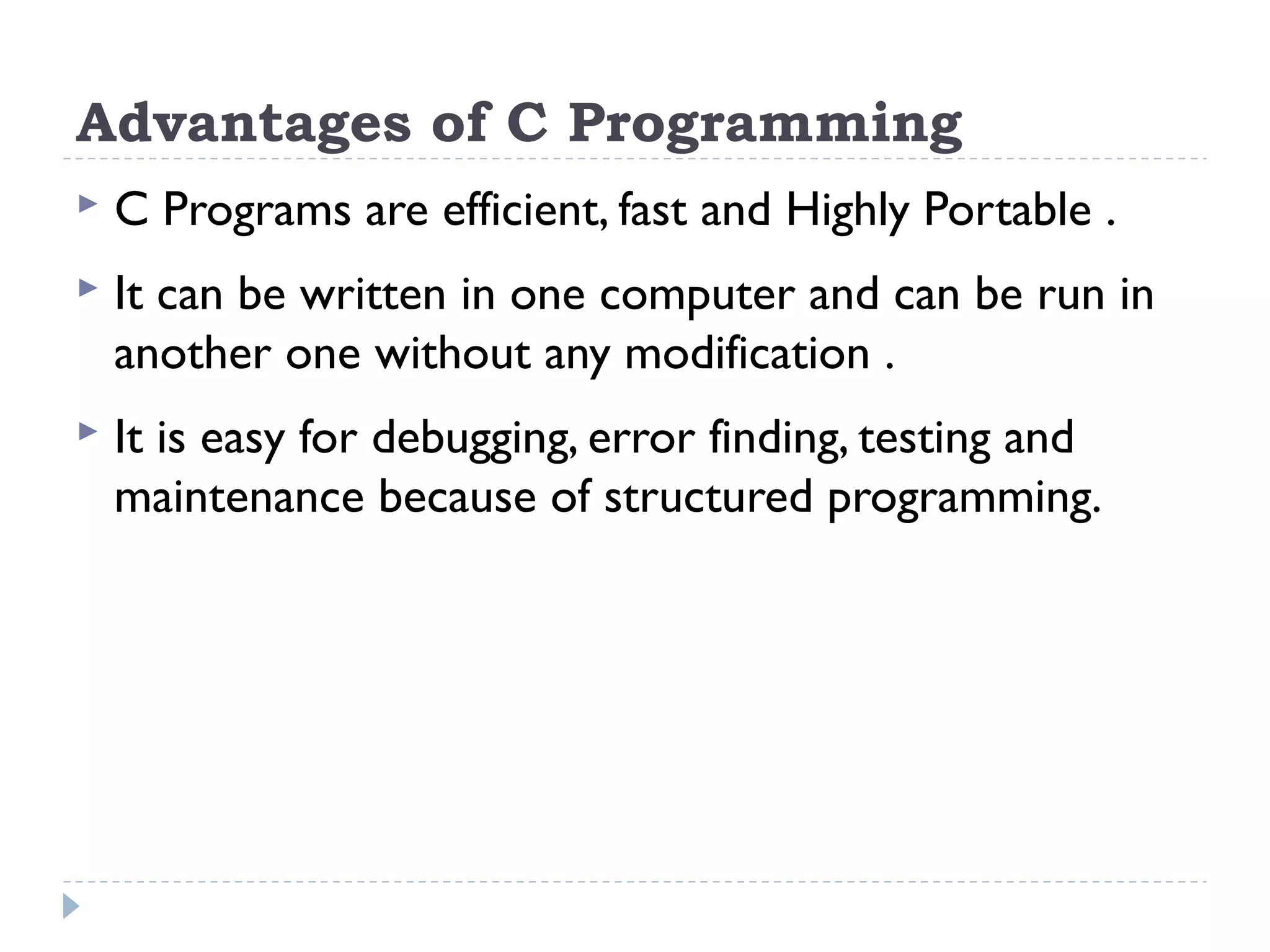The document discusses structured programming, highlighting its principles, features, and comparison to unstructured programming. It explains how structured programming, exemplified by languages like C, allows for modular design and improved readability while eliminating the goto statement. Additionally, it outlines the advantages of C programming in terms of efficiency, portability, and ease of debugging.
